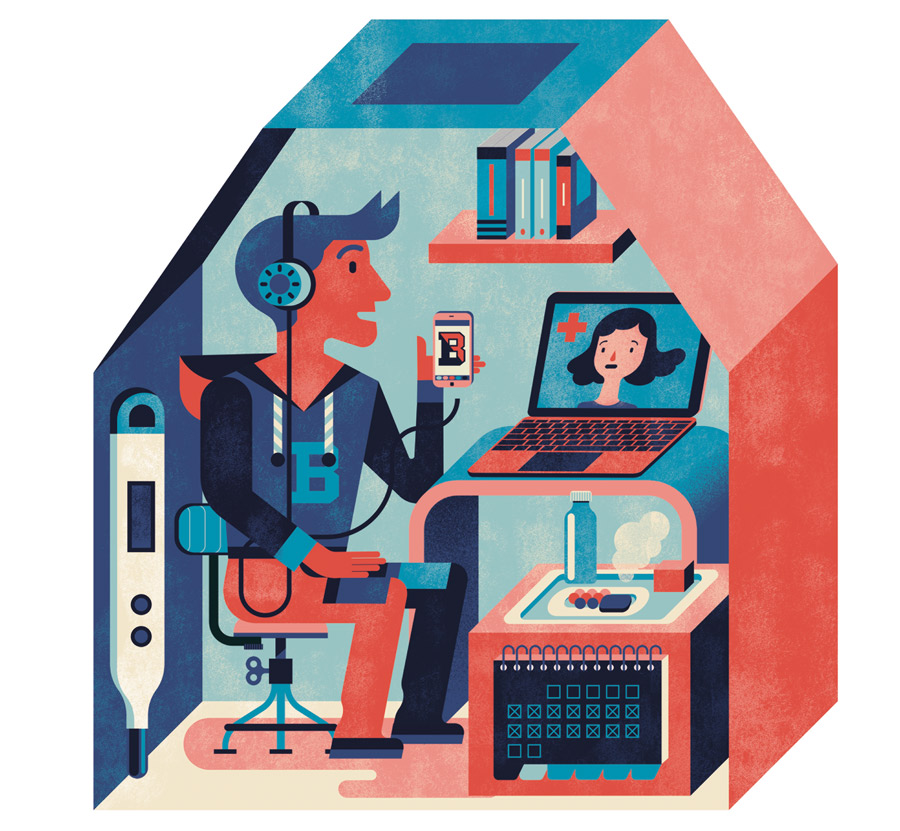But then the chief, Steve Barilar, learned something that made it worse: Tomorrow was her birthday. Making things as stress-free as possible is always priority one when Barilar or his officers move students to isolation housing, but in this case, he knew something extra was in order.
The next morning the student awoke to an email from Jackie Cetera, director of residential education, asking her to open the door to her room. Waiting on the doorstep was a gift basket filled with skin-care products (“like a miniature spa day,” Cetera says), along with birthday balloons and a bamboo plant to help the isolation room feel a little more like home.
Keeping the campus community safe from COVID-19 by isolating students who may have been infected is only possible through close collaboration between Bucknell Student Health, Housing & Residential Education, and Public Safety. It’s that same collaboration that helps make the process as comfortable as it can be for students.
“We reassure them that if they forgot anything, we’ll gladly bring it to them,” Barilar says. “We’ve had situations where students have given us their mailbox combination to pick up a package, or we’ve gone back to their room to get a charger they forgot. We do everything we can to make it less stressful, and you can see in their eyes that it takes a little bit of the stress away — because it is very stressful.”
The team’s efforts began well before the start of the semester with a prearrival testing program as well as immediate on-campus tests for students whose results didn’t arrive in time. At Student Health, Operations Manager Mary Weaver and her staff worked 19 days straight during the onboarding, starting at 6 a.m. and often continuing well past sundown.

Weaver concedes the process was hectic, but the trial by fire also helped the interoffice team work together smoothly and refine their collaboration as the semester progressed, she says.
When a student is moved to isolation or instructed to quarantine in their room on campus, one of their first and most important contacts is the housing community director who walks them through what to expect and checks for any special needs, such as dietary restrictions and service or emotional- support animals. Due to the rapid nature of Bucknell’s testing program, a positive test result could come at any time, day or night, but it’s important that a staff member be on call when one is received, says Rob Leibel, community director for Vedder Hall and the Gateway Apartments, if simply to “touch base with them to make sure they’re OK.”
“It’s so important that they understand why this is happening — that we’re trying to take care of the entire community, not targeting them because of something they may have done or the people they’ve been around,” says Traci Eschbach, community director for Harris, Larison and Smith halls. “We reassure them that they’re not alone, that there are other people in the same situation. But it’s not always easy, so I’m thankful to have such a good team that I can rely on.”
Check-ins continue throughout isolation or quarantine with contacts from community directors as well as daily video chat check-ins from Student Health. The virtual visits help nurses keep tabs on vital signs like temperature and blood oxygen, but they also offer a window into how the student is coping with the added stress of isolation. “If you can see their face, you can see how they’re really doing,” is how Weaver sums it up, adding that nurses review resources available through the Counseling & Student Development Center and make referrals to the center when needed.
Due in large part to rigorous testing and protocols for rapid isolation and quarantine, Bucknell was able to keep students on campus for the duration of the fall semester. That alone is rewarding for the team, but it’s doubly so when students recognize the efforts that underlie their experience, Weaver says.
“A lot of students have thanked us for doing this,” she says. “When we work those long hours and long days, I can’t tell you how nice it is to know it’s appreciated.”